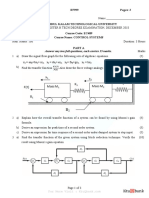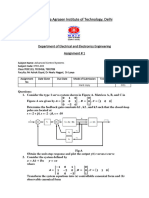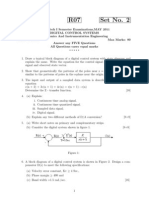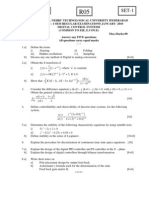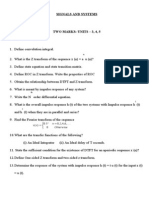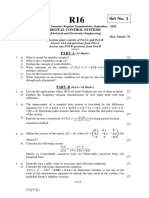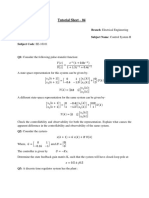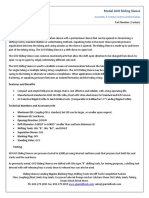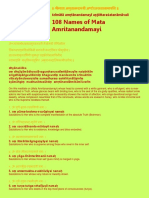0% found this document useful (0 votes)
79 views3 pagesTutorial No.3
This document contains 12 questions regarding control systems and state space representations. The questions cover topics such as: 1) Obtaining state space representations in controllable and observable canonical forms from transfer functions. 2) Transforming systems into controllable canonical form. 3) Obtaining transfer functions from state space representations. 4) Finding time responses and state transition matrices. 5) Discretizing continuous time systems. 6) Checking controllability and observability.
Uploaded by
Ajeet BhardwajCopyright
© © All Rights Reserved
We take content rights seriously. If you suspect this is your content, claim it here.
Available Formats
Download as PDF, TXT or read online on Scribd
0% found this document useful (0 votes)
79 views3 pagesTutorial No.3
This document contains 12 questions regarding control systems and state space representations. The questions cover topics such as: 1) Obtaining state space representations in controllable and observable canonical forms from transfer functions. 2) Transforming systems into controllable canonical form. 3) Obtaining transfer functions from state space representations. 4) Finding time responses and state transition matrices. 5) Discretizing continuous time systems. 6) Checking controllability and observability.
Uploaded by
Ajeet BhardwajCopyright
© © All Rights Reserved
We take content rights seriously. If you suspect this is your content, claim it here.
Available Formats
Download as PDF, TXT or read online on Scribd
/ 3



































